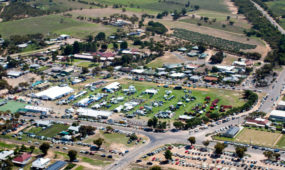New guide to nutrient levels in Australian seafood
Lifestyle
THE latest nutritional information on Australian seafood is backed by some serious science.

Sign up to receive notifications about new stories in this category.
Thank you for subscribing to story notifications.
Researchers in South Australia spent three years generating and analysing detailed information on 22 different species to create a scientific database and a set of consumer-oriented information material.
It was the most comprehensive such survey in more than a decade and included DNA profiling to confirm each fish species.
Advanced testing methods were used to accurately measure energy, protein, fat, sodium, fatty acids, water, vitamins and minerals in both wild and farmed seafood.
The project involved food safety scientists, nutritionists and four separate laboratories working in tandem.
It was undertaken by the South Australian Research and Development Institute (SARDI), which has expertise in food safety and food analysis, with funding from the Australian Seafood Cooperative Research Centre.
“The process to get there was detailed and intricate, with many checks and balances along the way,” said SARDI seafood safety researcher Alison Turnbull.
“Distilling large volumes of data into the easy-to-read format was a complicated process on its own, but the result speaks for itself.
“We've produced a beautiful booklet that is both engaging and informative and is backed by a detailed dataset that will continue to be used to determine public health benefits, inform risk-benefit analyses and help industry meet customer needs and regulatory requirements.”
A technical panel including SARDI, Adelaide’s Flinders University, Food Standards Australia & New Zealand (FSANZ) and Seafood Services Australia determined species selection, research methods, data management and reporting. Highly detailed specifications were released in a tender process, against which laboratories responded.
Ms Turnbull said nutrient levels in seafood varied around the world and it was important to get an accurate picture of the compositional profile of Australian species.
The aim had been to assess both the safety of the species studied (according to the FSANZ Food Standards Code) and their nutritional value as assessed by nutrition and dietetics experts.
All species tested contained health promoting omega three fatty acids and several species, including Atlantic salmon and sardines, were discovered to contain particularly high quantities of important vitamins and minerals and omega 3 fatty acids.
The project included fish, oysters, prawns, abalone, shark, rock lobster and sea cucumber.
A consumer Super Seafood website has a range of downloadable fact sheets.
Jump to next article



